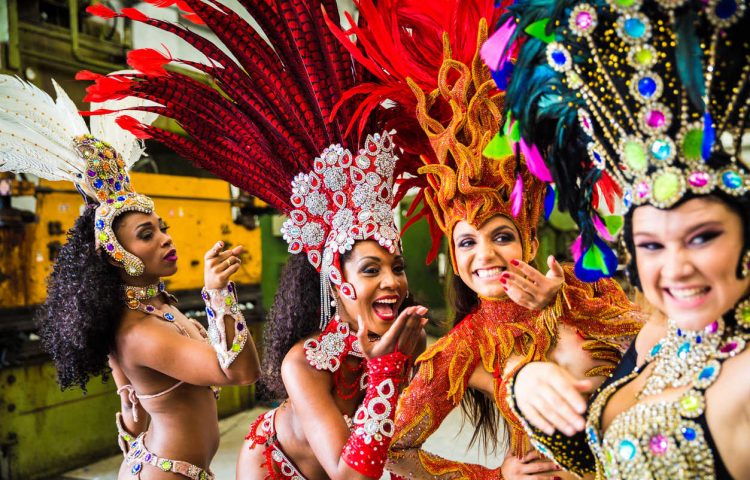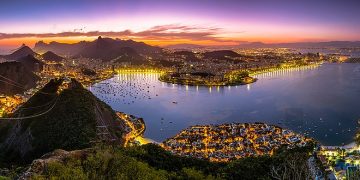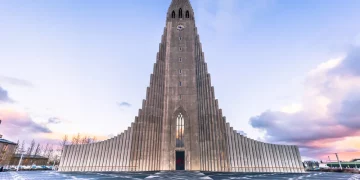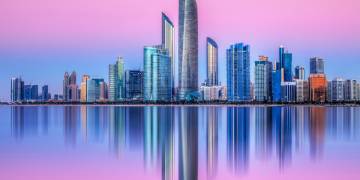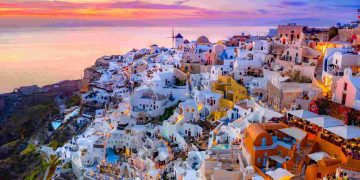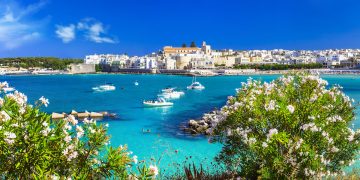Dance is one of the oldest forms of human expression, and across cultures, it has served as a way to celebrate, communicate, and connect with the divine. Traditional dance forms are often an essential part of global festivals, providing not only entertainment but also a deeper connection to the community’s history, values, and beliefs. These dances are more than just performances; they are cultural practices that carry meaning, storytelling, and spirituality passed down through generations.
From the lively Samba of Brazil to the elegant Kathak of India, traditional dances provide a glimpse into the cultural richness and diversity of our world. These dances often take center stage during important festivals and celebrations, bringing people together in a shared experience of joy, unity, and cultural pride. The significance of these dances can vary, with some being performed as a form of worship, others as a means of honoring ancestors, and still others as expressions of joy and social unity.
In this article, we explore the important role of traditional dance in global festivals, highlighting its connection to cultural identity, history, and the preservation of heritage. We will also discuss how these dances have evolved in the context of modern festivals, blending tradition with contemporary expression.
1. The Spiritual and Cultural Significance of Traditional Dance
Traditional dances are not merely artistic displays; they are deeply rooted in the spiritual and cultural practices of the communities that perform them. In many societies, dance is considered a form of communication with the divine, with the movements believed to invoke blessings, protection, or good fortune. For example, the Hula dance in Hawaii is not only a form of storytelling but also an offering to the gods, connecting the dancers with the spirit world.
Similarly, in African tribal rituals, dances are performed to honor ancestors and spirits, with the rhythmic movements believed to summon divine forces. These dances often take place during significant life events such as births, marriages, and funerals, as well as during harvest festivals, to ensure a prosperous future for the community.
In many cultures, dance is also a powerful means of preserving cultural identity. As the world becomes increasingly globalized, traditional dances act as a living heritage, allowing communities to maintain their distinctiveness while sharing their traditions with the world.
2. Traditional Dance as a Storytelling Medium
In many traditional dances, the choreography is not just a sequence of movements but a form of storytelling. Through dance, cultures pass down myths, legends, and historical events, creating an immersive experience for the audience. For example, the Chinese dragon dance tells the tale of an ancient dragon’s struggle to bring rain and prosperity to the land. This dance is typically performed during the Chinese New Year, symbolizing good luck and fortune.
Similarly, in the Māori Haka, the dance tells the stories of tribal warriors preparing for battle, with each movement reflecting the tribe’s history and values. The flamenco dance in Spain also tells stories of love, passion, and loss, often accompanied by soulful guitar music and powerful handclaps.
Through these dances, cultures ensure that their histories and beliefs continue to thrive, enabling new generations to connect with their heritage in a meaningful way.
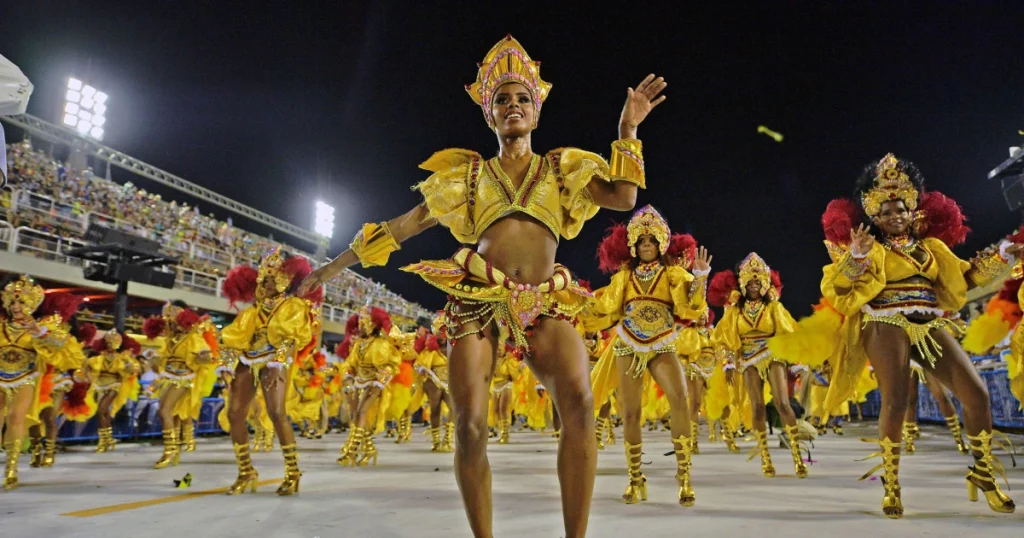
Hot Spot: Top Global Dance Festivals You Can’t Miss
Dance festivals around the world provide a platform for both traditional and contemporary dance styles, drawing visitors from all over the globe. These festivals celebrate the diversity of global dance culture and give travelers the opportunity to experience the beauty and rhythm of different traditions. Here are some of the top dance festivals you can’t miss:
1. Rio Carnival, Brazil
The Rio Carnival is one of the most iconic festivals in the world and is famous for its vibrant Samba parades. Held annually in February, the Rio Carnival is a massive celebration of music, dance, and culture. Samba schools from across the city come together to perform spectacular dance routines in front of thousands of spectators. The dazzling costumes, electrifying rhythms, and spirited performances make it a must-see for any dance enthusiast.
The samba is not just a dance but a way of life for many in Brazil. The Rio Carnival is a celebration of joy, freedom, and Brazilian cultural pride, and the Samba parades represent the culmination of months of preparation and practice. Visitors to the festival can witness some of the best dancers in the world, performing in the Sambadrome, a stadium designed specifically for the event.
2. The Edinburgh International Festival, Scotland
Scotland’s Edinburgh International Festival is another major event that celebrates the art of dance. Held every August, the festival attracts world-class performers and features a wide variety of dance styles, from classical ballet to contemporary dance. The festival is renowned for showcasing traditional Scottish dances, such as the Highland fling and Scottish country dancing, while also incorporating performances from other parts of the world.
The Edinburgh International Festival is known for its blend of traditional and modern dance forms, and it provides a unique opportunity to see how global dance styles evolve and influence each other. The Royal Edinburgh Military Tattoo, which also takes place during the festival, offers a spectacular display of military drills and traditional Scottish dance.
3. The Bali Arts Festival, Indonesia
Bali is a hub of traditional dance, and the Bali Arts Festival is the perfect event to experience the island’s rich dance heritage. Held annually in Denpasar, the festival showcases Bali’s famous Barong and Legong dances, as well as a variety of performances by local and international artists. Traditional Balinese dances are deeply rooted in Hindu mythology and tell stories of gods, demons, and ancient legends.
The Bali Arts Festival offers visitors the chance to immerse themselves in the island’s vibrant culture, with performances that range from religious dances to colorful folk performances. The festival is a celebration of both the traditional and modern aspects of Balinese culture, making it a must-visit for anyone interested in world dance traditions.
4. The National Folk Festival, USA
Held annually in Washington, D.C., the National Folk Festival is a celebration of traditional American dance and music. The festival highlights various regional dance styles, from Cajun and Bluegrass to Square Dance and Appalachian clogging. The National Folk Festival brings together performers from across the United States, providing a platform for local dancers and musicians to showcase their cultural heritage.
This festival is a wonderful way to experience the diversity of dance traditions found in the U.S., with performances that highlight the deep cultural roots of American dance forms. It’s a great destination for those who want to explore the folk dance traditions of different American communities.
Destination Guide: Explore Traditional Dance Performances in Iconic Cities
For those who want to explore traditional dance performances beyond the festival circuit, several cities around the world offer year-round opportunities to experience local dance forms. From the Flamenco of Spain to the Kathak of India, these cities provide a deep dive into the dance cultures that have shaped their history.
1. Seville, Spain – Flamenco Dance
Seville is the birthplace of Flamenco, one of the most passionate and emotional dance forms in the world. Visitors to Seville can experience this powerful dance in intimate settings, such as Tablaos (traditional flamenco venues), where dancers perform alongside live guitar music and soulful singing. Flamenco performances in Seville are a unique cultural experience, showcasing the deep emotional expression of Spanish culture.
Throughout the year, Seville hosts numerous flamenco festivals, including the Bienal de Flamenco, which brings together some of the best flamenco performers in the world. Flamenco is not just a dance; it is a way of life in Seville, and visitors can immerse themselves in this captivating art form.
2. Udaipur, India – Kathak Dance
In Udaipur, the traditional Kathak dance is celebrated as part of the city’s rich cultural heritage. Kathak is one of the eight classical dance forms of India and is known for its intricate footwork, expressive gestures, and storytelling through dance. Udaipur, with its beautiful palaces and serene lakes, provides a perfect backdrop for Kathak performances, and visitors can attend live shows in venues such as the Bagore Ki Haveli.
Kathak performances often accompany classical music, with dancers narrating ancient myths, stories, and religious tales through their movements. It’s a wonderful way to experience India’s rich cultural tapestry while enjoying the picturesque beauty of Rajasthan.
3. Accra, Ghana – Traditional African Dance
Accra, the capital of Ghana, is a hub for traditional African dance, with vibrant performances often taking place during cultural festivals and community celebrations. Adowa and Agbekor are some of the most well-known dance forms in Ghana, both of which feature rhythmic drumming and dynamic movement. These dances are often performed during ceremonies, weddings, and festivals, and they reflect the rich cultural heritage of the country.
Visitors to Accra can attend performances at local venues, including the National Theatre of Ghana or the W.E.B. Du Bois Memorial Centre for Pan-African Culture, where traditional dance is celebrated alongside African music and art.
Conclusion
Traditional dance plays an essential role in global festivals, serving as both a celebration of cultural heritage and a means of connecting with the divine, the past, and the community. Whether it’s the energetic Samba of Brazil, the elegant Kathak of India, or the passionate Flamenco of Spain, traditional dance provides a unique and immersive way to experience a culture’s history and values.
For travelers, attending dance festivals or exploring traditional dance performances in iconic cities offers a deeper understanding of a destination’s cultural fabric. These festivals and performances are not just artistic exhibitions but celebrations of life, identity, and unity, making them an unforgettable part of the travel experience.


